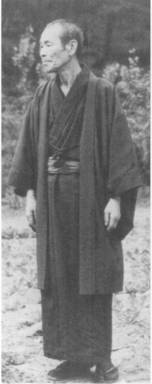“If you are not feeling well, the most important thing you can do is breathe.”
— Master Jiro Murai
 In the early 1900’s, a young philosopher from a prominent medical family rediscovered the profound Art, of what he later called Jin Shin Jyutsu, after he survived the threat of a terminal illness.
In the early 1900’s, a young philosopher from a prominent medical family rediscovered the profound Art, of what he later called Jin Shin Jyutsu, after he survived the threat of a terminal illness.
In the isolation of the wilderness, he utilized the techniques from his studies of ancient teachings about meditation, finger poses (mudras), and breathing. To his amazement, Jiro was able to reverse the disharmonies of his body and restore his own health. He then dedicated the remaining years of his life to the study of this Art.
Searching for answers, Murai studied the Bible, and ancient Chinese, Greek, and Indian texts. However, it was the Kojiki, the Japanese “Record of Ancient Things,” which describes creation in allegories that opened the door for him. Murai also studied the Chinese acupressure points and ancient acupuncture writings. He compared the experience of what he felt to be much deeper than what he found in the writings. “There is an awareness in Jin Shin Jyutsu that is deeper than technique,” Burmeister says.
From his study of the Kojiki and his 50 years of personal experimentation,  Murai concluded that Jin Shin Jyutsu was more than a philosophy of the body.
Murai concluded that Jin Shin Jyutsu was more than a philosophy of the body.
In the late 1940s, Master Murai met a Japanese American woman, Mary Burmeister. He asked her if she would like to study with him and take a gift from Japan to America. After many years of continued study, Master Murai’s request became a reality.
